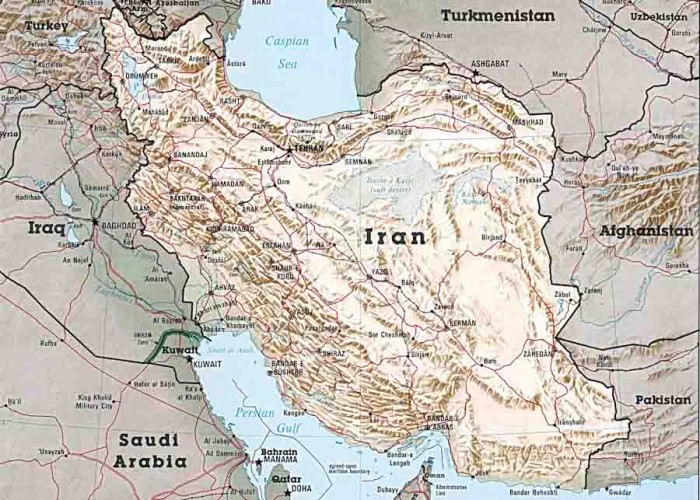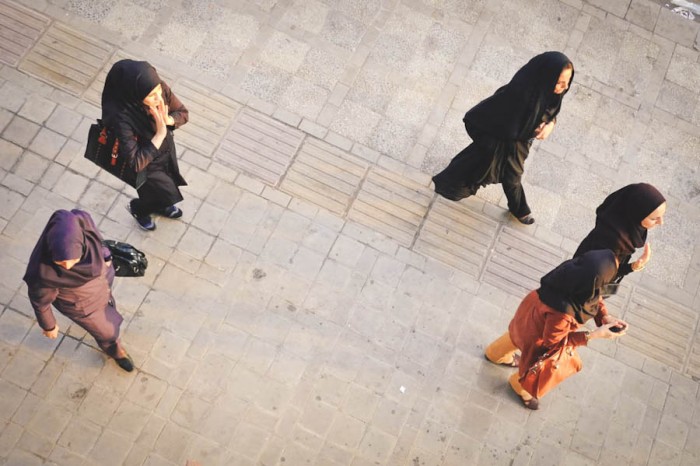A recent boom in tourism to Iran has sparked excitement in the Seattle travel community. It’s also created a new sense of hope for Iranian American youth like me that we might finally be able to visit the country our parents fled decades ago.
The Financial Times recently placed Iran at the top of its list of “Top 2014 destinations, picked by travel industry leaders,” alongside places like Sweden, Vietnam, and Japan.
With the recent election of moderate Hassan Rouhani as president, the long isolated country has renewed efforts to improve its international image and open its doors to tourism.
If you’re intrigued by Iran’s rich history and culture, and are considering a visit, there’s plenty you’ll need to know.
Earlier this month the Huffington Post convened travel agents and past visitors — including Rita Zawaideh, owner of Caravan-Serai Tours in Fremont — for a webcast titled “Iran: Your Next Vacation Destination.”
The panelists, including Jean-Paul Tennant, CEO of tour organizer GeoEx, World Affairs Council of Philadelphia Associate Travel Director Shoshana Altichter, and veteran travelers Nate Robert and Pattie Sullivan, took on the stigmas and stereotypes about Iran
“It’s about perceptions,” Tennant commented in the webcast. “People think it’s a scary place.”
I got the chance to follow up with Zawaideh, (recently named “Globalist of the Year” for her work with Syrian refugees) to discuss the guided tours Caravan-Serai is now offering to Iran.
“These tours are a way to humanize the Iranians to the west,” Zawaideh said. “We don’t spend a lot of time taking people to archeological sites because I want people to see day-to-day life. We go to local restaurants, we get them to intermingle with locals.”
The website offers nifty guides detailing what to expect, such as “What To Wear,” a suggested reading list, a map and a travel handbook. Past tourists like Nate Robert confirm that Iran is a generally welcoming country that is easy to acclimate to.

“I was drawn to Iran because of the history,” Robert commented in the webcast. “What I was surprised to find is they were some of the friendliest and most welcoming people I’d encountered on the planet. And I’ve travelled a lot. You get invited to people’s homes for mehmoonis [parties] and have conversations non-stop every day.”
Zawaideh believes there’s much more than tourism at stake, and her first word of advice is to leave everything you’ve heard in the papers and on television at the door.
“I ask [my clients] what the first thing comes to mind is when they hear Iran, and they say words like ‘backward,’ ‘terrorist’ and ‘dangerous,’” Zawaideh said. “If I ask the same question after visiting, it’s completely different — they say words like ‘friendly,’ ‘lovely,’ ‘welcoming.’”
For Iranian Americans looking to visit for the first time, University of Washington Professor Haideh Saheli-Esfahani offers a similar perspective. She’s been making biannual trips to Iran to visit her family in her hometown of Nishapur for years. She says that since left Iran in the 1970’s, the country has grown into a completely different place.
“My hometown has grown ten times its size since when I left in 1975,” Saheli-Esfahani said. “There are shops, apartment buildings, malls and a commercial district. And just ten miles away there are the ancient ruins of Nishapur which date back to 3,000 years ago.”
Tehran, the capital — and the top site for tourists — has developed in its own distinct way.
“Tehran is very close to the west, and is like a completely different country in and of itself,” Saheli-Esfahani said. “There is a large number of the population that has a westernized value system and lifestyle.”

Saheli-Esfahani believes it’s extremely important for tourists to understand how strikingly similar the people of Iran can be to the people in the U.S.
“If you look at the average Iranian middle class family, they want the same things that an American middle class family wants — steady income, stable retirement, education and prosperity for their children, etc.,” Saheli-Esfahani said.
And as with any country, Saheli-Esfahani notes that Iran’s history makes for an extremely complex society that is hard to grasp from the outside. For me, that’s all the more reason to finally visit.
“Americans will find that after visiting for a brief period that the picture is not complete — you can’t figure Iran out in ten days,” Saheli-Esfahani said.
[infobox color=”#e7fff8″ textcolor=”#000000″]
Tips for travel to Iran:
When to go: March, April, and May, and throughout Autumn are the best times. Caravan-Serai tours in May-June are filling up fast, but more are scheduled for fall 2014. Processing visas can take up to a month, so plan ahead!
Who should go: Anyone who is interested. Zawaideh says that especially those with preconceived notions about Iran will learn a lot from visiting there. She also encourages Iranian Americans who have never been to the country to go and see things for themselves.
Who shouldn’t go: If you have a stamp from Israel in your passport, you must get a new passport before you can get an Iranian visa. Visa applications include questions about your political affiliation. Theoretically you can be denied a visa based on those answers, but Caravan-Serai hasn’t seen that happen yet.
How to get a visa: Getting a visa as an individual is very hard. A tour operator like Caravai-Serai or GeoEx can arrange the letter of invitation and an authorization number needed for a visa, greatly increasing your chances of success.
[/infobox]



Dear All I’m already happy to know people are coming to visit my beautiful country I’m a freelance tour guide and I enjoy answering your questions , and I work in a an office called Pintapin , we offer all the hotels and accomodation with a good discount rate and you can also use your credit cards to book, (visa and master) .I’d be glad to help u out . en.pintapin.com
and if you wanna plan a trip you can use the data in our blog : https://en.pintapin.com/blog